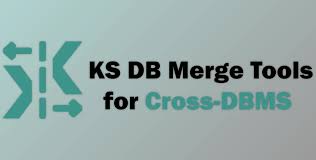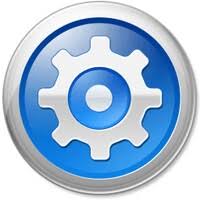KS DB Merge Tools for Cross-DBMS Download (Latest 2025)
KS DB Merge Tools for Cross-DBMS is an advanced database synchronization and comparison tool designed for developers and database administrators. It allows users to compare, merge, and synchronize database schemas and data across different Database Management Systems (DBMS), including MySQL, PostgreSQL, SQL Server, Oracle, SQLite, and MS Access.
Key Features of KS DB Merge Tools for Cross-DBMS 1.11.0
1. Cross-DBMS Compatibility
- Supports a wide range of databases, including:
- MySQL
- PostgreSQL
- SQL Server
- Oracle
- SQLite
- MS Access
- Allows seamless schema and data comparison between different types of DBMS.
2. Schema and Data Comparison
- Compares database structures, tables, columns, indexes, constraints, and triggers.
- Identifies differences between schemas and data across different databases.
- Generates detailed reports on database discrepancies.
3. Data Synchronization and Merging
- Provides a one-click synchronization feature to update data in target databases.
- Supports bi-directional data merging, allowing updates from either source or target.
- Offers flexible options to exclude or include specific tables or columns during synchronization.
4. User-Friendly Interface
- Intuitive graphical user interface (GUI) for easy navigation and quick analysis.
- Quick filters to display all, new, or changed items for better comparison.
- Visual representation of differences between databases for easier understanding.
5. Performance Optimization
- Optimized algorithms for fast database comparison and merging.
- Efficient data processing, reducing memory consumption and increasing execution speed.
- Supports batch processing, allowing multiple database comparisons simultaneously.
6. Support for Large Databases
- Designed to handle large-scale databases with millions of records.
- Uses efficient indexing and caching to speed up comparison operations.
- Provides error handling and rollback options to prevent data corruption.
7. Backup and Export Features
- Allows users to backup schemas and data before synchronization.
- Supports exporting comparison results in CSV, JSON, or SQL scripts.
- Ensures data integrity and safety during the merging process.
What’s New in KS DB Merge Tools for Cross-DBMS 1.11.0?
The latest version 1.11.0 introduces several new features and improvements:
- Enhanced Performance: Optimized comparison algorithms for faster execution speeds.
- Expanded Compatibility: Better support for newer versions of PostgreSQL, MySQL, and SQL Server.
- Improved Synchronization Process: More control over table-level synchronization options.
- Bug Fixes and Stability Improvements: Resolved known issues for smoother operations.
System Requirements
KS DB Merge Tools for Cross-DBMS is a lightweight yet powerful application that runs on various Windows and Linux operating systems.
Supported Operating Systems:
- Windows 7, 8, 10, 11 (32-bit & 64-bit)
- Windows Server 2012, 2016, 2019
- Linux distributions with Java Runtime Environment (JRE)
Minimum Hardware Requirements:
- Processor: Dual-core Intel or AMD processor
- RAM: 4GB (8GB recommended for large databases)
- Storage: 500MB free disk space
- Database Drivers: JDBC or ODBC drivers installed for the target databases
How to Use KS DB Merge Tools for Cross-DBMS

1. Install and Launch the Tool
- Download the portable or installer version of KS DB Merge Tools.
- Open the application and select the source and target databases.
2. Configure Database Connections
- Enter database credentials (host, port, username, password) for both databases.
- Establish a secure connection to retrieve schema and data details.
3. Compare Database Schemas and Data
- Select comparison mode (schema only, data only, or both).
- The tool will analyze and display differences in tables, columns, indexes, and data values.
4. Merge and Synchronize Data
- Choose automatic or manual synchronization mode.
- Apply changes to update data, modify structures, or merge differences.
- Review detailed logs before finalizing updates.
5. Export and Backup Data
- Generate comparison reports for future reference.
- Export results in SQL scripts or CSV format.
- Create a backup before applying changes for security.
Pros and Cons of KS DB Merge Tools for Cross-DBMS
✅ Pros:
Supports Multiple Databases – Works with MySQL, PostgreSQL, SQL Server, Oracle, and more.
Fast and Efficient – Optimized for quick comparisons and synchronization.
User-Friendly Interface – Simple and intuitive GUI for easy navigation.
Highly Customizable – Allows users to select specific tables, columns, or data sets for merging.
Cross-Platform Compatibility – Works on Windows and Linux.
Backup and Export Features – Ensures data security with backup and export options.
❌ Cons:
Limited Automation Features – Does not support full automation or scheduling.
Requires Database Credentials – Needs full access to both databases for comparison.
Not a Full Database Management System – Designed for comparison and merging only, not full DBMS management.
Who Should Use KS DB Merge Tools for Cross-DBMS?
This tool is ideal for:
Database Administrators (DBAs) – To maintain data consistency across multiple databases.
Software Developers – To merge databases during application development.
Data Analysts – To compare datasets from different sources.
System Integrators – To migrate or synchronize data between old and new systems.
Businesses with Multiple Database Systems – To ensure data integrity and consistency across platforms.
Safety Tips When Using KS DB Merge Tools for Cross-DBMS
- Always create a backup before making database modifications.
- Verify database connections to prevent accidental data loss.
- Review changes carefully before applying synchronization.
- Use filters to exclude unnecessary tables or columns during comparison.
Conclusion
KS DB Merge Tools for Cross-DBMS 1.11.0 is an essential tool for database professionals who need a reliable and efficient way to compare, merge, and synchronize databases across different platforms. Its user-friendly interface, advanced comparison features, and powerful synchronization capabilities make it a must-have tool for database administrators, developers, and data analysts.


